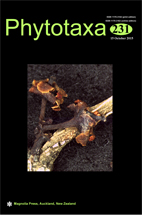Abstract
Didymosphaeria spartii was collected from dead branches of Spartium junceum in Italy. Multi-gene phylogenetic analyses of ITS, 18S and 28S nrDNA sequence data were carried out using maximum likelihood and Bayesian analysis. The resulting phylogenetic trees showed this to be a new genus in a well-supported clade in Massarinaceae. A new genus Pseudodidymosphaeria is therefore introduced to accommodate this species based on molecular phylogeny and morphology. A illustrated account is provided for the new genus with its asexual morph and the new taxon is compared with Massarina and Didymosphaeria.

